Immigration
ISIS and its violent Central Asian chapter are threatening Canada and the West with jihad. Hussain Ehsani for Inside Policy
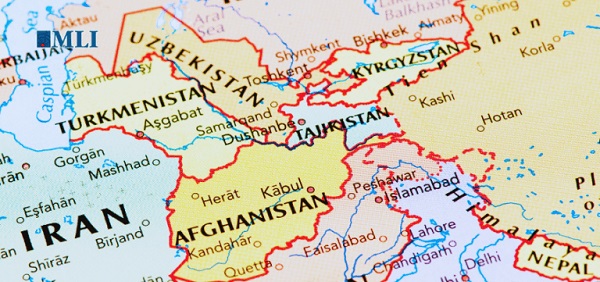
From the Macdonald Laurier Institute
By Hussain Ehsani
Recent terrorism-related arrests in Canada and the wider West are evidence of the resurgence of ISIS, and especially its ultra-violent Afghanistan wing… recently revealed internal memos by Canada’s Integrated Terrorism Assessment Centre (ITAC) highlighted ISIS’s growing role in inspiring domestic terrorism
Ten years ago, the Islamic State of Iraq and Syria waged a holy war that threatened to engulf the wider Middle East. At its peak, ISIS conquered nearly 200,000-square-kilometres of Iraq and Syria, inspiring thousands of jihadis to join its crusade against the West.
It took a global coalition of 87 nations and groups, led by the United States and including Canada, to defeat Daesh for good. By December 2017, the damage was decisive: ISIS had lost more than 95 per cent of its territory. The coalition members celebrated the defeat of ISIS and thought it could no longer pose a threat, in the Middle East or anywhere else.
The moment lasted only a short time.
Recent terrorism-related arrests in Canada and the wider West are evidence of the resurgence of ISIS, and especially its ultra-violent Afghanistan wing. At the same time, recently revealed internal memos by Canada’s Integrated Terrorism Assessment Centre (ITAC) highlighted ISIS’s growing role in inspiring domestic terrorism, and in particular, potential “lone Wolf” attacks against Canada’s Jewish community.
The memos – issued on June 24 and July 10, 2024, and later obtained by media – were prescient: On July 31, Canadian police detained two alleged ISIS-affiliated men in Richmond Hill, Toronto, apparently based on a tip from French intelligence. In September, the RCMP in Quebec – working with the FBI – arrested a Pakistani national on a student visa for allegedly plotting an attack on a Jewish centre in Brooklyn, New York. These events were especially shocking since it was widely believed that ISIS was confined to Iraq and Syria. But ISIS is clearly influencing a new generation of terrorists around the world. Indeed, it’s suspected that ISIS inspired, and possibly directed, a plot to attack the Jewish community in Ottawa last February. Police arrested two Ottawa youths in relation to the alleged plot and charged them with attempted murder.
American authorities have also thwarted ISIS schemes, resulting in the arrest of ISIS-Tajiki operatives in the US earlier this year. The arrests continue: On October 7, the FBI apprehended an Afghan national and a juvenile co-conspirator for allegedly planning an attack under the Islamic State banner on November 5 – the day of the US presidential elections.
These US arrests point to a new trend: the rise and global reach of the Afghan branch of ISIS, known as the Islamic State-Khorasan Province (ISKP). Some background is necessary. ISIS officially emerged in 2014, following rapid territorial gains in eastern Syria and northwestern Iraq. Rooted in the ideology of Salafi Jihadism, ISIS sought to establish a “Caliphate” governed by a strict interpretation of Sharia law. The group declared its leader, Abu Bakr al-Baghdadi, as Caliph in June 2014 after capturing Mosul, Iraq’s second-largest city. This marked the height of ISIS’s power, controlling large swaths of Syria and Iraq.
As ISIS entrenched itself, it began expanding its influence beyond Iraq and Syria. Various affiliates, known as “provinces” or “wilayat,” emerged worldwide. Pledging allegiance to the central ISIS leadership, these groups dedicated themselves to establishing a global Islamic State.
That is one reason for the group’s resilience and recent resurgence. The ISKP was one of the most deadly branches to emerge. Founded in southeastern Afghanistan in 2015 on the border with Pakistan, ISKP immediately sought closer ties with the core ISIS group in Syria and Iraq to gain legitimacy and embolden its fighters and middle-rank commanders to conquer more territory. Those efforts came up short, and ISKP failed in its first years to win ISIS’s support.
Since then, ISKP has redoubled its efforts to impress its ISIS masters – and in many ways, it has succeeded. The group is now among the strongest of ISIS’s adherents.
Turning Point
The collapse of the former Afghan Government on August 15, 2021, was the turning point, when a host of transnational extremist fighters were released from prisons of Afghanistan. Aside from rejoicing about the withdrawal of foreign troops from Afghanistan, they prepared to take up their “holy duty” to expand ISIS’s regime. ISKP initially in 2015 drew its fighters from disaffected and wayward elements of the Taliban, Haqqani network, and Pakistani Taliban. The release of an additional cohort of Salafists (Sunni fundamentalists) aided its recruitment.
ISKP moved quickly to expand its influence and operations. The first attack in this new era was devastating: it stormed the Abbey Gate of the Kabul Airport on August 26, 2021, killing 170 Afghan civilians and 13 US soldiers. The US Department of Defense later released a report that Abdul Rahman al-Logari, one of the prisoners released on the day of Kabul collapse, was behind the Abbey Gate attack.
The message was clear – ISKP was on the march.
ISKP on the International Stage
To gain “formal” admission to the ranks of ISIS’s provinces, ISKP would have to show initiative and capability, not just in Afghanistan but in the wider territory of Khorasan: Iran, Tajikistan, Uzbekistan, and the eastern part of Turkmenistan.
To do so, it had to find new targets. Traditionally, the Hazara community, the most persecuted ethnicity in Afghanistan, was the main target for Islamist groups, along with former Afghan security forces. They remain primary victims. However, ISKP’s range of targets and ability to strike them has grown. It added new targets in Afghanistan, attacking the Russian embassy in Kabul in September 2022, and a Chinese facility in December of the same year. Then it started reaching beyond the borders of Afghanistan: ISKP has carried out terrorist attacks in Central Asia and plotted a number of them in Pakistan.
Targets even farther away have now been hit. In January 2024, ISKP executed a complex attack in Kerman, Iran, at an event commemorating Qasem Sulaimani, the former commander of the Iranian Islamic Revolutionary Guard Corps (IRGC) Qods Force, killed by US forces in 2020. On March 22, 2024, it hit a concert hall in Moscow – an operation that took the international community by complete surprise.
These operational successes mattered, but ISIS’s core leaders in Syria and Iraq demanded signs of ideological subservience as well. Under the leadership of Sanaullah Ghafari (also known as Dr. Shahab al-Muhajir), ISKP worked hard to prove that its propaganda machine is an engine of ISIS Salafist ideology.
ISKP uses fluency in a variety of languages, including Urdu, Russian, Tajiki, Uzbeki, Turkish, English, and Pashto, to spread its message. It seeks to extend its ideology to other fighters in the region in order to recruit transnational Salafi Jihadists. It has already recruited a vast number of terrorists from the ranks of the Islamic Movement of Uzbekistan in the north of Afghanistan. ISKP also exploited propaganda and demand from the diaspora of Uzbekistan and Tajikistan to plot attacks against Western countries.
The attacks and ideological efforts seem to have worked. ISKP now appears to have become the operational wing of the core ISIS group. After the ISKP attack on Moscow, an ISIS spokesman released a 41-minute audio message praising the attack by “Mujahidin” and called on other “dormant” provinces of the “Caliphate” to rise up and follow ISKP’s example.
The terror spreads
ISIS leader Abu Hafs al-Hashimi al-Quraishi has more work in mind for his prized ISKP group. His priorities include freeing jihadists detained in Syria and attacking targets in Europe and North America.
In Syria, Al-Quraishi has encouraged ISIS terrorists to redouble efforts to attack the Syrian Democratic Forces, a US-backed Kurdish militia in the country’s northeast, and try to break detained comrades out of SDF-run prisons. These facilities host thousands of ISIS fighters, including women and children. Given the success of ISKP’s operations and recruitment, ISIS is likely trying to implement the same tactic of jailbreaks in Kurdish territory in Syria and Iraq, to replenish its ranks.
ISIS spokesmen have also called for all Muslims to attack Christians and Jews in the broader West.
In September 2024, Türkiye’s domestic security agency (MIT) arrested Abuzar Al Shishani, who allegedly was plotting an attack on Santa Maria Italian Church in Istanbul in early January 2025. According to MIT, ISKP recruited him in 2021. The arrests in Canada, the US, and Türkiye are proof that ISKP’s reach is growing.
How can Canada fight back?
Canada and its allies in the West must act now to counter the terrorist threat posed by ISKP and ISIS. Fortunately, the RCMP and other Canadian police forces halted the recent spate of planned domestic terror attacks. However, stringent immigration screening is also crucial to keeping Canada and its allies safe. The Canada Border Services Agency needs to be ready to deal with the ISIS/ISKP threat.
To that end, Public Safety Canada should examine ways to enhance inter-agency targeting and intelligence sharing. A task force consisting of Immigration, Refugee and Citizenship Canada, Canadian Heritage, the Canadian Revenue Agency, and FINTRAC – given their respective roles in immigration processing, countering disinformation and anti-terrorist financing – could help to ensure maximum coordination against the group.
Canada must also guard against the threat ISKP/ISIS poses to religious and minority communities in the country. ISIS’s call to target Jewish and Christian communities presents a special challenge. The Jewish community is particularly vulnerable due to the rampant antisemitism seen at pro-Hamas, Hezbollah, and Iran rallies across Canada. But Christian sites, like churches, are also vulnerable. ISKP/ISIS are also likely to target Muslim groups that speak against its violent ideology.
Canada should collaborate with international partners to support communities and groups opposed to ISKP/ISIS. These include the Hazara, Kurdish, and Yazidi communities in Afghanistan and Kurdistan, as well as allies in the Kurdistan Regional government, and the Syrian Democratic Forces. Canada should also support initiatives led by the Kingdom of Saudi Arabia and other Gulf Cooperation Council countries to strengthen the voice of moderate Islam in the Middle East and Central Asia. Such initiatives require careful diplomacy with allies and a range of partners. That is what Canada will require to counter the evolving threat of ISIS and ISKP.
Hussain Ehsani is a Middle East affairs analyst with expertise on the Islamic State and al-Qaeda in Iraq and Afghanistan. He is currently exploring the foreign policy relationship between Saudi Arabia and Canada. In addition to MLI, he also contributes to the Jerusalem Post, BBC Persian, and The Hill.
Immigration
Immigrant background checks are unrelated to national security?
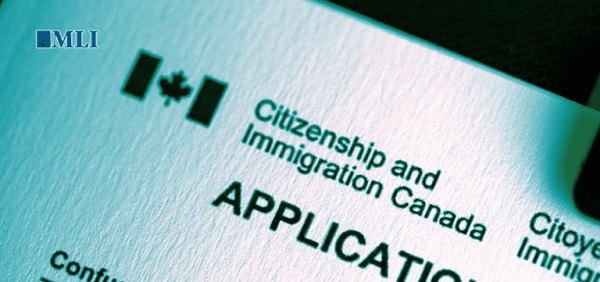
 By David L. Thomas for Inside Policy
By David L. Thomas for Inside Policy
Canadians are rightly under the impression that migrants have been properly vetted before coming into our country. But it’s clear we’re not living up to expectations.
A recently de-classified 2022 report of the National Security and Intelligence Review Agency (NSIRA) suggests we’ve entirely misplaced our priorities when it comes to protecting Canadians from foreigners with dangerous backgrounds. Apparently referring prospective immigrants from places in the world beset with violent extremism for deeper background checks could constitute discrimination against those individuals that is “not justifiable on security grounds.”
Arbitrary discrimination on a prohibited ground is wrong. However, it is obviously important, for example, for the government to conduct proper security checks when we admit people into Canada as immigrants. There are times when certain discrimination might be warranted.
Essentially, for fear of being accused of discrimination, our national security oversight committee has deemed that checking prospective immigrants for ties to terrorist organizations is not a matter of national security. This is plainly absurd and is a grave risk to our national security.
The decision-style report of the NSIRA tribunal related to a group of complaints before the Canadian Human Rights Tribunal (CHRT) under the Canadian Human Rights Act (CHRA). The large group of complainants were citizens of Iran seeking temporary or permanent visas to Canada and who were subjected to security background checks. They alleged discrimination on the basis of race and that the CSIS checks delayed the processing of their visa applications (reported by NSIRA as an average delay of 14 days for temporary visas and 26 days for immigration visas). Iran is a country with which we have no diplomatic relations and we have designated as a state sponsor of terrorism since 2012.
Without the resources of CSIS and a deeper security check, how could an immigration officer in the field determine if a visa applicant may have once been a member of a terrorist organization, like al-Qaeda, or a drug cartel? CSIS security checks are designed to look deeper into an individual’s background, sometimes with the co-operation of foreign spy agencies.
These complaints came across my desk in the final months of my term as the Chairperson of the CHRT. Having previously practiced immigration law for more than 20 years, I was well aware of CSIS security background checks. My expectation was that the NSIRA would recommend dismissal of the complaints because, well of course, checking whether a prospective immigrant is connected to a terrorist organization has to be related to the security of Canada, no?
Apparently not.
The CHRT complaints were suspended under a never-before-used section of the CHRA. Under Section 45, the Minister of Immigration, Refugees and Citizenship Canada gave notice “that the (alleged discriminatory) practice to which the complaint relates was based on considerations relating to the security of Canada.” Despite this notice, the Human Rights Commission declined to dismiss the complaints and instead referred the matter to the NSIRA to provide a report on the matter.
The NSIRA report was the first of its kind and acknowledged there is little legislative guidance on the nature of its role under a Section 45 referral. However, in my view, the NSIRA has usurped the role of the CHRT by determining that the criteria applied for requesting the CSIS background checks “was not justifiable on security grounds.” In my view, their determination should have been limited to only whether the alleged discriminatory practices related to national security.
Nevertheless, the complaints are now proceeding before the CHRT to determine if it was discriminatory to make referrals for security background checks.
Arbitrary discrimination is, in most cases, against the law. However, there are exceptions, and one of them is Section 45 of the CHRA which creates a “carve out” from the normal rules when a matter of national security is on the line. And yet, the NSIRA decision bizarrely set aside national security and failed to grant the exception.
Canada has drastically increased its intake of migrants in recent years. Since 2021, the annual target for permanent residents was almost doubled to 500,000. Non-immigrant foreigners, mostly students and temporary workers, accounted for 2.5 million people, or 6.2% or the population in 2023. As these are people entering Canada legally, Canadians are rightly under the impression that migrants have been properly vetted before coming into our country. But it’s clear we’re not living up to expectations.
Canada recently admitted Muhammad Shahzeb Khan from Pakistan, accused of plotting a massive attack against Jews in New York last October. When this news broke Canada was still reeling from the embarrassment of having just granted Canadian citizenship to Ahmed Fouad Mostafa Eldidi. Along with his son, Mostafa Eldidi, he was arrested in July last year as the pair was accused of being in the advanced stages of planning a violent attack on behalf of ISIS in Toronto. Apparently, Ahmed appears in a 2015 video dismembering an ISIS prisoner with a sword.
All prospective immigrants to Canada are subject to checks for past criminal activity. However, sometimes an immigration officer might flag an applicant for a security screening by the Canadian Security Intelligence Service (CSIS) to determine if a visa applicant has ties to terrorist groups, espionage, war crimes, crimes against humanity, etc.
In order to protect Canada, immigration officers in the field should have the unfettered discretion to refer any non-Canadian for a CSIS security background check. The referral is not a denial of entry into Canada. Applicants are just being asked to wait a little longer until we’re satisfied about their background. Immigration officers should not be second-guessing themselves about this discretion for fear of a human rights complaint.
Now is the time for Canada to set its priorities right. Our national security must be paramount and should not be hamstrung by unrealistic idealism.
David Thomas, a senior fellow at the Macdonald-Laurier Institute, is a lawyer and mediator in British Columbia. From 2014 to 2021, he was the chairperson of the Canadian Human Rights Tribunal.
Immigration
Canada must urgently fix flawed immigration security rules
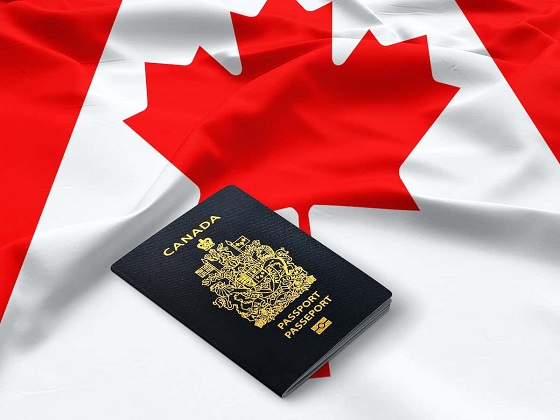
The Macdonald Laurier Institute
By Sergio R. Karas for Inside Policy
As Canada faces increased threats of terrorist attacks, its lax, anachronistic immigration laws are putting all Canadians in jeopardy. Without urgent reforms to the Immigration and Refugee Protection Act (IRPA), Canada will face grave risks not just from terrorism but also espionage and subversion.
The critical need to tighten screening and secure the border comes as newly elected United States President Donald Trump threatens massive tariffs against Canada for failing to crackdown on the crisis earlier.
Section 34(1) of the IRPA sets out the inadmissibility criteria for individuals engaged in espionage, subversion, terrorism, being a danger to the security of Canada, engaging in acts of violence that would or might endanger the lives or safety of persons in Canada, or membership in an organization involved in such activities. This provision enables authorities to address potential threats to national security.
Canada faces several emerging security challenges, including terrorism, the rise of antisemitic violence, and Islamic radicalism. The trouble is, Section 34(1)’s overly broad definitions and inconsistencies in enforcement make it extremely challenging to address these rising threats.
Emerging threats to national security
Canada has long enjoyed a reputation for providing safe haven to refugees and other immigrants. However, the failure to properly screen newcomers – especially those from conflict zones – could exploit that weakness and allow radicals or terrorists to enter the country.
For instance, the federal government is currently accepting applications from Palestinians from Gaza to enter Canada. As of mid-January 2025, Immigration, Refugees, and Citizenship Canada has accepted 4,245 applications for processing under its temporary resident pathway for Palestinian extended family in Gaza; 733 people have been approved to come to Canada. Hamas’s control of Gaza and Canada’s limited ability to screen applicants pose heightened security risks. Since the October 7, 2023, Hamas terror attacks on Israel, Canada has been plagued by antisemitic violence and disruptive mass pro-Palestinian rallies. Meanwhile, polls indicate significant support for Hamas by Palestinians and its October 7 terrorist attacks. Although Canada has temporarily enhanced its screening protocols for Gazans, the risk of allowing Hamas terrorists or their supporters into Canada raises the risk of increased social tension and even antisemitic violence against Jewish Canadians.
Concerns about Canada’s porous border are not just hypothetical. Recently, authorities arrested a Pakistani national in Canada for allegedly planning an attack on the Jewish community in New York. Muhammad Shahzeb Khan, in Canada on a study permit, told an undercover law enforcement officer that “October 7 and October 11 were the best days to target Jews.”
Antisemitism has risen sharply in Canada since the October 7 attacks. The Canadian Security Intelligence Service (CSIS) warns that the Israel-Hamas war has led to a spike in “violent rhetoric” from “extremist actors” that could prompt some in Canada to turn to violence. According to the latest Global 100 survey conducted by the Anti-Defamation League (ADL), nearly half of people worldwide hold antisemitic views. The study found that 46 per cent of adults, an estimated 2.2 billion people, have strong antisemitic attitudes. This is more than double the level recorded in ADL’s first global survey a decade ago and the highest ever reported.
At the same time, Canada has long struggled in its efforts to identify and deport potential threats to national security. For example, in Mugesera v. Canada (Minister of Citizenship and Immigration), a former Rwandan politician accused of inciting violence against Tutsis during the Rwandan genocide, remained in Canada for over sixteen years before his deportation in 2012. His case highlights the extended timelines involved in the removal process. Former Immigration Minister Jason Kenney said that Mugesera’s case showed that Canada was too generous with suspected foreign war criminals. He also said, “At some point, it turns into a mockery of Canada’s generosity, eventually we have to remove war criminals and stop talking about it.”
In another case, Mahmoud Mohammad Issa Mohammad v. Canada, a convicted terrorist managed to drag out his deportation battle 26 years. Mohammad – a member of the Popular Front for the Liberation of Palestine (PFLP) convicted of taking part in a deadly attack on an Israeli plane at Athens airport in the 1960s – lied about his identity, his criminal past, as well as his ties to terrorist organizations. Kenney told reporters at the time “This case is almost a comedy of errors, with delays, with a system that was so bogged down in redundant process and endless appeals that it seemed to some that we would never be able to enforce the integrity of Canada’s immigration system and deport this terrorist killer.” Authorities cited Mohammad for misrepresentation on multiple grounds, yet he still managed to remain in Canada for decades. The threat of misrepresentation is a significant security concern. Thorough screening is crucial to ensure that those admitted do not pose security risks, given their possible affiliation with groups involved in violence or other activities that threaten national safety.
The recent arrest of multiple suspects on terrorism-related charges is a wake-up call for Canada, highlighting an urgent need to overhaul immigration screening processes to safeguard national security.
On July 31, 2024, the RCMP announced the arrests of Ahmed Eldidi and his son, Mostafa Eldidi, on multiple terrorism-related charges. Global News reported that the two men, originally Egyptian nationals, were allegedly involved in terrorist activity connected to the Islamic State of Iraq and Syria (ISIS). The article also revealed that in June 2015, the father allegedly took part in an ISIS propaganda video where he was seen dismembering a prisoner with a sword. On August 28, 2024, the Globe and Mail reported that the father, who became a Canadian citizen just two months before his arrest, had initially been denied a visitor visa in 2017. However, after supplying additional documents, he obtained a visitor visa in 2018 and became a permanent resident in 2021. The fact that Ahmed Eldidi was able to become a naturalized citizen, despite his violent ties to ISIS is bewildering.
Furthermore, according to Global News, Canadian Hezbollah members have taken part in several attacks overseas. They include a Vancouver man wanted for a bus bombing in Bulgaria that killed five Israeli tourists and a local driver, as well as a former Toronto grocer, Fawzi Ayub, who was a hijacker and member of Hezbollah’s Islamic Jihad unit. He was killed while fighting in Syria in 2014.
These arrests and the presence of such elements in Canada highlight the urgent need to revamp the system to prevent these security failures.
Reforming s. 34(1)
The Supreme Court of Canada in Mason v. Canada (Citizenship and Immigration) ruled that people can only be found inadmissible under section 34(1)(e) of the IRPA if they engaged in violent conduct linked to national security or the security of Canada. Since neither Mason nor his co-appellant were alleged to have engaged in acts of violence linked to national security or the security of Canada, section 34(1)(e) did not provide a basis for the inadmissibility of either person. This decision limits the ability of authorities to implement measures aimed at removing individuals from the country as it narrows the scope of grounds for inadmissibility.
Concerns about increasing Islamic radical activity in Canada have led the authorities to scrutinize events that may pose potential harm to the public. After Islamic radicals promoted a Hizb ut-Tahrir (HuT) Khilafah Conference 2025, authorities stated that “Reports of the upcoming conference, which was scheduled for January 18, 2025, in Hamilton, Ontario, were deeply concerning. Hizb ut-Tahrir has a documented history of glorifying violence and promoting antisemitism and extremist ideology.” The conference organizers ultimately cancelled the meeting, but critics are still calling for Hizb ut-Tahrir to be designated a terrorist entity under the Anti-Terrorism Act.
Narrowing legislative definitions and enhancing oversight could address security challenges. In Canada (Citizenship and Immigration) v. Harkat, which deals with inadmissibility on security grounds, the Supreme Court of Canada noted the lack of clear definitions for critical terms such as “terrorism,” “danger to the security of Canada,” and “member of an organization” in Section 34(1) of the Immigration Act.
Further, in Suresh v. Canada (Minister of Citizenship and Immigration), the Supreme Court of Canada provided a functional definition of “terrorism,” drawing from international conventions. However, membership in a terrorist organization remains difficult to define. This absence of precise language has created challenges in interpreting and applying the provisions fairly and consistently.
In Charkaoui v. Canada, the Supreme Court of Canada dealt with the constitutionality of security certificates, the court noted the tension that exists between rights and security. In this complex security landscape, the responsibility to protect both national security and individual rights remains a challenge.
The overly broad definitions and terms in this section have meant that the courts have been reluctant to apply it. To address these issues, Parliament should bring forward amendments to render terms like “terrorism” and “member of an organization” more concrete by tying them to specific acts, so the courts will not have to guess what was meant in the legislation.
An internal audit of the Immigration National Security Screening Program, covering the period between 2014 and 2019, revealed that out of the 7,141 cases that were flagged due to security concerns, including war crimes, espionage, and terrorism, 3,314 were approved for temporary, permanent, and refugee status. That is nearly half (46 per cent) of the foreign nationals flagged by security agencies who have been allowed to become permanent residents despite those concerns.
In order to improve the system, Canada should conduct stricter background checks incorporating international intelligence, increase the scrutiny of applicants, and impose restrictions on individuals with links to regions dominated by extremist groups or nations known to sponsor terrorism.
Canada should also consider implementing policies and legislative initiatives such as the No Visas for Anti-Semitic Students Act introduced in the U.S. Congress to combat university encampments and antisemitic harassment, which aim to revoke visas for international students of pro-terrorist protesters, enabling immigration officials to remove foreign students engaged in illegal activities.
The federal government should also amend Section 34(1) of the IRPA to provide more flexibility to visa officers and to CBSA Port of Entry officers to deny visas and entry to individuals where there are reasonable grounds to believe that they will engage in activities that will promote hate against an identifiable group, or whose rhetoric in public will be inflammatory. Further, authorities should also deny entry to individuals suspected directly or indirectly of ties to groups providing material support of terrorist organizations. The legislation must be updated so it can be used against modern-day public threats, and to ensure that the courts can rely on a clear legislative framework and policy to deal with judicial review of visa or entry denials.
Sergio R. Karas, principal of Karas Immigration Law Professional Corporation, is a certified specialist in Canadian Citizenship and Immigration Law by the Law Society of Ontario. He is co-chair of the ABA International Law Section Immigration and Naturalization Committee, past chair of the Ontario Bar Association Citizenship and Immigration Section, past chair of the International Bar Association Immigration and Nationality Committee, and a fellow of the American Bar Foundation. He can be reached at [email protected]. The author is grateful for the contribution to this article by Jhanvi Katariya, student-at-law.
-
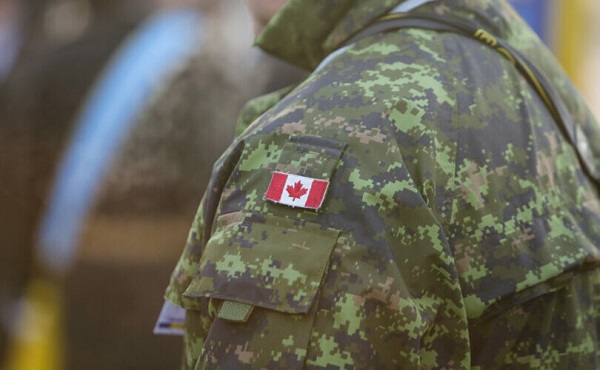
 armed forces2 days ago
armed forces2 days agoYet another struggling soldier says Veteran Affairs Canada offered him euthanasia
-

 Alberta1 day ago
Alberta1 day agoGovernments in Alberta should spur homebuilding amid population explosion
-

 conflict2 days ago
conflict2 days agoWhy are the globalists so opposed to Trump’s efforts to make peace in Ukraine?
-
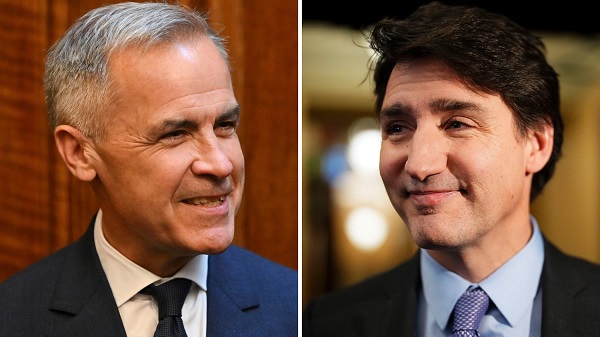
 2025 Federal Election1 day ago
2025 Federal Election1 day agoCarney’s budget is worse than Trudeau’s
-
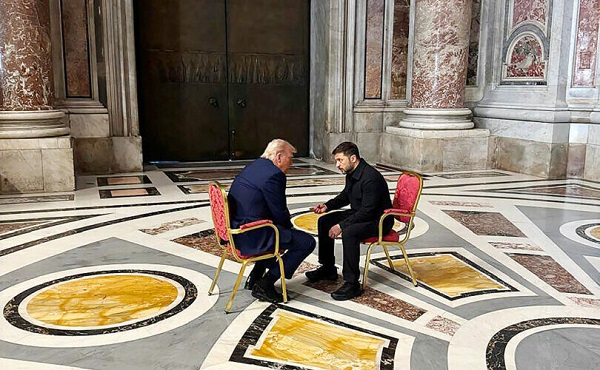
 International1 day ago
International1 day agoHistory in the making? Trump, Zelensky hold meeting about Ukraine war in Vatican ahead of Francis’ funeral
-
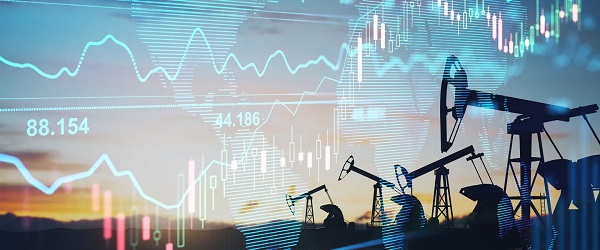
 Alberta1 day ago
Alberta1 day agoLow oil prices could have big consequences for Alberta’s finances
-

 Business1 day ago
Business1 day agoIt Took Trump To Get Canada Serious About Free Trade With Itself
-

 C2C Journal21 hours ago
C2C Journal21 hours ago“Freedom of Expression Should Win Every Time”: In Conversation with Freedom Convoy Trial Lawyer Lawrence Greenspon







